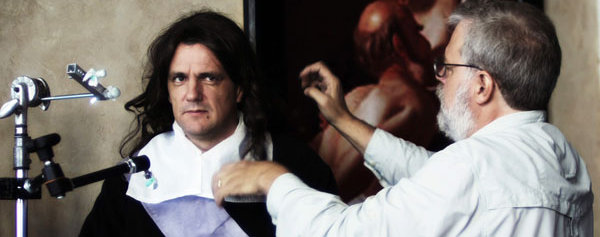CAMILLE CLAUDEL 1915
The brilliant female sculptor Camille Claudel, according to the 1988 movie version starring Isabelle Adjani, was oppressively dominated by the towering presence of Auguste Rodin and effectively driven insane by jealous but more powerful men. But writer-director Bruno Dumont isn’t interested in that version or chapter of Claudel’s life. Dumont is one of cinema’s supreme materialists, his camera trained on the fundamental reality of faces, bodies, soil, things. He observes Juliette Binoche’s brittle, raw, terrifying Claudel barely clinging to mental clarity as she wanders the dank corridors of a provincial Catholic-run asylum in 1915. She may be obsessed with Rodin, but she’s a woman of here and now; it’s the spiritualists, like her airy poet-brother, Paul, full of religious righteousness, whom Dumont despises. “Camille Claudel 1915” (at Laemmle’s Royal in West Los Angeles, Town Center 5 in Encino, Playhouse 7 in Pasadena) is hard as a rock, yet as vulnerable as Binoche’s questing gaze.
LENNY COOKE
Tapped as the country’s best high school basketball player in 2002—yes, ahead of LeBron James, ahead of Amar’e Stoudemire—Lenny Cooke seemed to be on a direct run to the NBA, bypassing college altogether. This was rare back then; Kobe Bryant did it a few years prior, and James and Stoudemire managed the same jump. So what happened to Lenny? The wonderful, cockeyed and always surprising brother team of Josh and Benny Safdie (“Daddy Longlegs”) started to film Lenny, at 17, in 2002 and followed him sporadically from there. They didn’t know they were documenting a spectacular failure. A string of bad decisions and a pattern of falling to temptations (fast-talking agents, long nights out on the town) brought down Lenny’s star, and now, turning 30, Lenny is found by the Safdies to be overweight, full of regret and completely unsure of his future. His attempt to educate young guys with NBA dreams on his mistakes feels like a faint coda. Minute by minute, “Lenny Cooke” (at Laemmle’s Music Hall in Beverly Hills) may be the year’s saddest movie.
TIM’S VERMEER
Was Vermeer cheating when he created incandescent paintings that seem to glow from within, so physically and tonally exact that they play like photographs to our eyes? Teller, the silent partner in the great anti-magic act Penn and Teller, is a brilliant guy, a former math teacher and science whiz, and a magpie for amazing stuff. He and Penn Gillette decided to shoot their inventor/entrepreneur friend Tim Jenison as he went about re-creating, with fanatical precision in an Austin warehouse, the conditions in which Vermeer painted “The Music Lesson.” The result, “Tim’s Vermeer” (at the Landmark in West Los Angeles), is astonishing and revolutionary: As much as it can possibly be done, Jenison confirms the theories of painter David Hockney’s and art historian Philip Steadman that Vermeer and other Dutch masters used optical instruments to recreate exact lighting and physical conditions with paint and canvas. Cheating? No. Penn and Teller present it as one cool trick, and as they’ve done their entire careers, they explain how the trick works—the science behind it. Ironically, it makes the end result all the more magical.
Robert Koehler, a film critic for Film Comment, Cinema Scope, IndieWire and Cineaste, blogs about movies on arts·meme.
.



